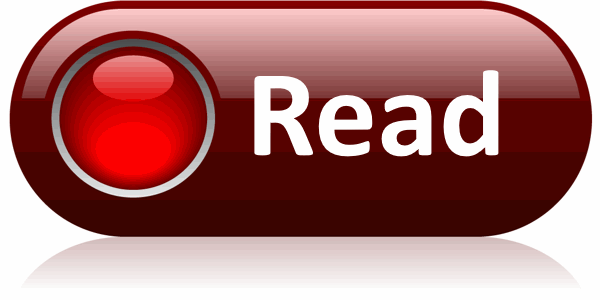By Jacqui Ruppel, Senior Investigator for Employment Compliance Solutions LLC and Mike Loughrin, CEO for Transformance Advisors
Insights from 37 Experts
Evaluating and managing employee performance can be tricky – even more so when that employee is remote. Given modern collaboration tools and technologies, remote workers now comprise a significant part of work teams. As such, tracking the performance of remote employees is an important aspect of ensuring individual actions are aligned with organizational objectives.
Effective and consistent monitoring of employee performance helps a business in a variety of ways. It can help refine goal setting for both the organization and the employee to better realize certain behaviors and outcomes. It can also help improve employee engagement, productivity, satisfaction, growth, and retention.
In our quest to identify the best ways to track employee performance, we asked experts for their favorite metrics for tracking remote employee performance. We broke our request to the experts into 2 types – 1 for onsite employees and 1 for remote employees. The balance of this article explores the favorite ways for tracking the performance of remote employees. Another article focusing on onsite employees can be found at Tracking Performance of Onsite Employees.
Let’s take a look at the favorite ways for tracking performance for remote employees and read what some of the experts have to say.

Favorite Techniques
Our experts reported 110 of their favorite techniques for tracking performance. We sorted the responses into more general categories and culled them to the 8 methods most frequently mentioned. The top 8 favored performance tracking methods are:
- Task Completion: Getting the job done is top-of-the-list with 33% of the favorites dealing with some aspect of people completing the tasks they are assigned. Task completion measurements for remote employees tended to be focused on speed, quality, or self-assessment.
- Collaboration with Colleagues: It seems teamwork makes the dreamwork for remote employees. Our experts indicated 15% monitored interactions with colleagues as a performance metric for remote employees. Such interactions included knowledge sharing, updating coworkers on projects, and bringing in colleagues within and across teams to help resolve issues.
- Customer Relationships: Coming in third at 14% was a focus on customers. Our experts prioritized proactive, meaningful communication with customers. They tracked the timing of employee outreach to customers, the quality of the conversation, and customer retention.
- Process Improvement: Ranking at 10%, our experts highlighted the importance of remote employees identifying areas for improvement. These ranged from improved customer experience to quick adaptation of new technologies and internal communication enhancements.
- Problem Solving: On the heels of process improvement, at 6%, is its cousin Problem Solving. Similar to Process Improvement, experts like to see remote employees taking initiative to identify and remove obstacles to getting the job done. Here, the experts focus on remote employees owning a problem from end to end, not just the parts related to their job. Experts also liked to see remote employees self-initiate and make quality, autonomous decisions.
- Skill Development: Our experts emphasized the development and use of skills, a category which garnered 5% of the overall response.
- Sales: 4% of the experts touted sales as a favorite technique. These focused on employee actions that resulted in revenue or growth. The experts agreed this metric demonstrated desired behaviors of employees beyond basic sales transactions.
- Peer Feedback: Our experts felt peer feedback was important to getting an accurate picture of an employee’s performance.
“This is an outcome-oriented, quantitative measure, and I like it because it focuses on actual results rather than hours logged. It lets employees work flexibly while giving managers a clear picture of progress and productivity.”
– Sovic Chakrabarti, Director, Icy Tales
“Project Quality Reviews capture dimensions beyond speed or volume. Regular feedback on the accuracy, creativity, and problem-solving demonstrated in deliverables ensures that output aligns with organizational standards and client expectations.”
– Anupa Rongala, CEO, Invensis Technologies
“Since implementing this metric, our remote team’s collaboration increased 60% because people realized isolation wasn’t rewarded. It prevents the “out of sight, out of mind” productivity drop that kills remote teams.”
– Scott Crosby, General Manager, EnCompass
“In remote teams, timely updates and proactive collaboration often determine project flow and team trust.”
– Arvind Rongala, CEO, Edstellar
“Remote workers who naturally maintain relationships understand that their screen isn’t a barrier to genuine business connections.”
– Nicole Farber, CEO, Nicole Farber
“One of our remote specialists increased client retention by 30% just by sending monthly “everything’s running smooth” emails with performance graphs.”
– Mitch Johnson, CEO, Prolink IT Services
“These metrics reveal remote employees who think like business partners rather than task executors.”
– Luis Trujillo, Owner, Resting Rainbow of Orlando
“In remote settings, focusing on these metrics allows for employees to demonstrate adaptability, engagement, and growth capacity.”
– Thomas Faulkner, Founder & Principal Consultant, Faulkner HR Solutions
“Remote work requires higher levels of self-management and strategic thinking than office environments. This measurement identifies individuals who can work effectively without constant oversight while contributing meaningfully to organizational objectives through independent execution and strategic thinking.”
– Raj Baruah, Co Founder, VoiceAIWrapper
“I measure whether remote staff solve the entire customer journey, not just their piece of it. Our top remote performers handle 73% more issues per call because they think holistically about customer needs rather than checking boxes.”
– JP Monteverde III, President & CEO, Complete Care Medical
“Remote employees who consistently engage in upskilling demonstrate adaptability and resilience, which directly strengthens organizational capability.”
– Arvind Rongala, CEO, Edstellar
“My remote intake specialist converts 67% of initial calls into consultations for our aesthetic services, compared to 52% industry average. She does this by asking the right qualifying questions about patient goals rather than just scheduling appointments.”
– Christina Imes, Founder, Tru Integrative Wellness
“This metric reveals which remote workers understand they’re not just processing tasks – they’re directly impacting practice profitability.”
– Tim Johnson, CEO, BIZROK
“I encourage team members to share observations on collaboration, communication, and problem-solving, helping me understand interpersonal dynamics that numbers alone can’t capture.”
– Nikita Sherbina, Co-Founder & CEO, AIScreen Digital Signage Software
Quantitative and Qualitative
Our experts provided a mix of quantitative and qualitative measurements.
Quantitative metrics refer to measurements which can be directly measured, usually with a numerical value. These measurements give clear, objective answers about productivity and efficiency. They’re generally easy to track, explicit in interpretation, and are often used for tasks or roles with a clear numerical output or deliverable.
In terms of the favorite techniques provided by our experts, task completion, sales, customer relationships, and process improvement had the highest percentage of quantitative measurements.
Qualitative measurements, in contrast, capture more nuanced and subjective aspects of employee performance. While not always directly measurable, their significance lies in assessing characteristics like skills, initiative, teamwork, and creativity. These evaluations generally require input from self-assessments, supervisors, peers, and even customers who interact with the employees frequently.
In terms of the favorite techniques provided by our experts, collaboration with colleagues, customer relationships, employee engagement, problem solving, peer feedback, and skill development had a high percentage of qualitative measurements.

“When engagement is high, our employees will add to our overall quality of work, which leads to decent collaboration and an enhanced driver for innovation.”
– Josh Qian, COO and Co-Founder, LINQ Kitchen
Summary
Tracking employee performance reveals important information for both an employer and the employee. Used correctly, it can provide valuable insight into how an employee is aligned with strategic goals and corporate performance, while also contributing to employee growth and satisfaction.
We collected insights from 37 experts by asking for their favorite ways to track employee performance. Overall, the responses demonstrated that, although tracking employee performance comes in many variations which are unique to individual employers, trends emerge which reveal general categories and concepts that are industry agnostic.

“Don’t measure yourself by what you have accomplished, but by what you should have accomplished with your ability.”
– John Wooden
Mike Loughrin is the CEO and Founder of Transformance Advisors. He also teaches for Louisiana State University Shreveport and is on the board of directors for the Association for Supply Chain Management Northern Colorado.
Mike brings exceptional experience in industry, consulting services, and education. He has directed several Lean Transformation programs and has helped organizations such as Levi Strauss, Warner Bros., Cabela’s, Constellation Brands, Lexmark, and Sweetheart Cup.
Keeping a commitment to a balanced life, Mike loves downhill skiing, bicycle rides, and hiking in the mountains. See one of his trails of the month at: Little Switzerland.
References
9 Ways to Track Employee Performance by Personio.

